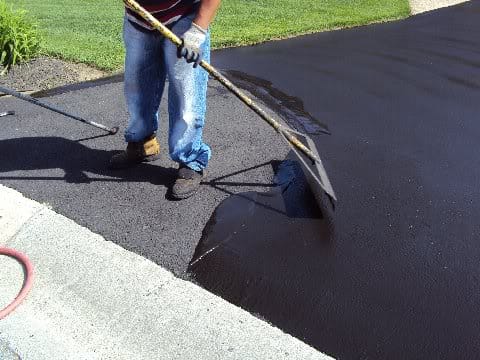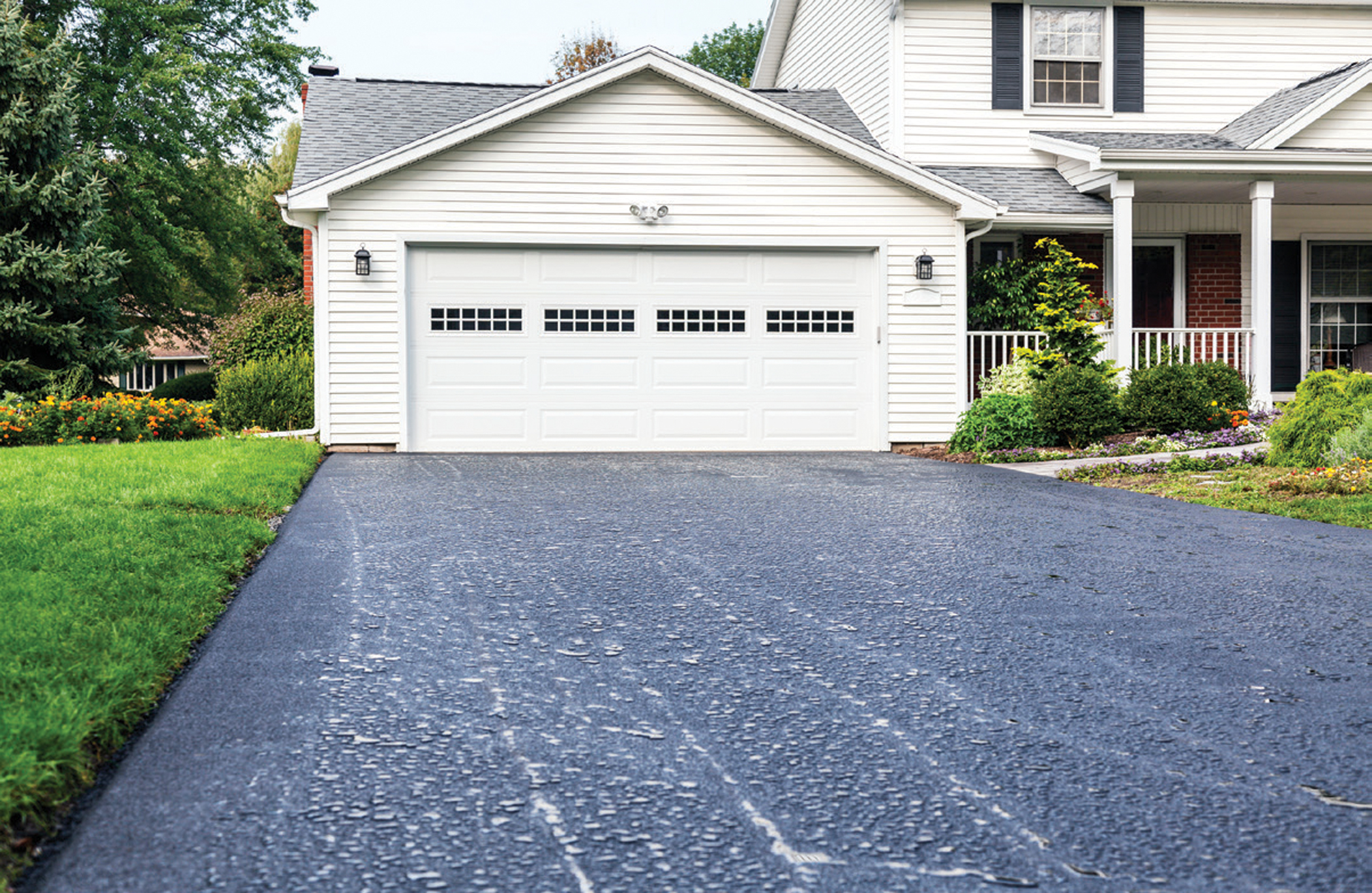Hot Mix Asphalt: A Lasting Solution for Pavement
Warm Mix Asphalt (HMA) has arised as a leading lasting selection for sidewalk remedies, supplying a myriad of environmental advantages and innovative technologies. Its ability to decrease and recycle materials power consumption presents a compelling case for its fostering in roadway building projects. The long-lasting performance and toughness of HMA make it a recommended option for framework development. As the need for environment-friendly building and construction techniques grows, exploring the nuances of HMA's sustainability can supply valuable insights right into the future of pavement options.
Environmental Benefits of Hot Mix Asphalt

Moreover, Warm Mix Asphalt aids to reduce city heat island results. Its dark shade soaks up sunlight, lowering the quantity of warmth showed back into the ambience compared to lighter-colored pavements. This can reduce ambient temperatures in city areas, decreasing the demand for a/c and eventually minimizing energy consumption.
Additionally, Warm Mix Asphalt contributes to improved stormwater monitoring. Its porous nature permits water to recharge and infiltrate the sidewalk groundwater products, reducing drainage and the threat of flooding. These environmental advantages make Warm Mix Asphalt a lasting selection for paving roads and highways.
Energy Effectiveness in HMA Production
Is energy effectiveness a critical variable in the production of Hot Mix Asphalt (HMA)? Energy plays a substantial role in the production of HMA, affecting both cost and environmental sustainability. One crucial element of power effectiveness in HMA production is the usage of cozy mix asphalt (WMA) technologies.
Moreover, advancements in plant innovations have actually led to even more energy-efficient HMA manufacturing procedures. Modern plants are designed with functions like recycled asphalt pavement (RAP) handling capabilities, efficient heater systems, and boosted insulation, all adding to power financial savings. By optimizing power usage in HMA production, the sector can lower its carbon impact while keeping top notch sidewalk products. Energy performance is, as a result, an important factor to consider in ensuring the sustainability of Hot Mix Asphalt production.
Recyclability of Warm Mix Asphalt
The recyclability of Hot Mix Asphalt (HMA) is a critical facet of its sustainability and lasting environmental effect. HMA is among one of the most recycled materials in the United States, with over 100 million loads of reclaimed asphalt sidewalk (RAP) being recycled every year in brand-new sidewalk construction. Recycling HMA uses a number of environmental advantages, such as minimizing the demand for virgin materials, decreasing power intake throughout manufacturing, and decreasing the quantity of waste sent out to land fills.
The process of recycling HMA involves milling the existing sidewalk, crushing it into smaller pieces, and mixing it look at more info with brand-new accumulation and asphalt binder to produce a recycled mix. This recycled mix can often perform as well as or even better than traditional HMA, while requiring less resources and producing lower greenhouse gas exhausts. By including RAP into brand-new pavement jobs, roadway firms can conserve natural deposits, decrease expenses, and reduce the environmental footprint of roadway building and maintenance tasks. Overall, the recyclability of HMA plays a considerable duty in promoting sustainable methods within the sidewalk market.

Long-Term Efficiency of HMA
Asphalt sidewalks demonstrate durability and resilience over an extended period, reflecting the long-term efficiency of Hot Mix Asphalt (HMA) The long life of HMA can be connected to its capacity to endure heavy traffic loads, extreme climate conditions, and the results of aging. Researches have shown that properly designed and appropriately constructed HMA pavements can last for 20 years or more with routine upkeep. The key to making best use of the long-lasting efficiency of HMA depends on making use of high-grade products, adhering to ideal practices in building, and carrying out efficient maintenance strategies. Proper drainage, routine inspections, and prompt fixings are vital for preserving the structural stability of HMA sidewalks over time. Additionally, improvements in HMA innovation, such as using polymer-modified binders and warm mix asphalt, have actually even more improved the longevity and long life of HMA sidewalks. By prioritizing high quality construction and upkeep practices, HMA remains to show itself as a lasting and cost-efficient solution for lasting pavement framework.

HMA: Longevity and Sustainability
Demonstrating both resilience and sustainability, Warm Mix Asphalt (HMA) has come to be a foundation in the building and construction of long-lasting pavement infrastructures - commercial parking lot paving. HMA's toughness originates from its capacity to stand up to heavy lots, harsh climate condition, and high website traffic volumes, making it a reputable option for roadways, freeways, and airport runways. The composition of HMA, which generally includes aggregates, binder, and filler, plays a critical duty in improving its longevity and resistance to tear and use
Additionally, HMA's sustainability lies in its recyclability and energy-efficient production process. The capability to reuse redeemed asphalt sidewalk (RAP) in brand-new HMA blends reduces the demand for virgin materials and decreases the ecological impact of sidewalk construction and upkeep. Additionally, the energy efficiency of producing HMA exists in its lower mixing temperature levels compared to various other pavement products, bring about minimized energy intake and greenhouse gas discharges.
Verdict
To conclude, warm mix asphalt (HMA) supplies a sustainable service for pavement look at here now with its eco pleasant attributes. HMA's recyclability, energy performance in production, and long-term toughness make it an eco-friendly option for roadway building and construction. By preserving natural deposits, minimizing waste, and decreasing greenhouse gas exhausts, HMA plays a home vital function in advertising sustainability in infrastructure development. Its ability to minimize city heat island effects even more highlights its value in producing durable and ecologically aware sidewalk systems.
HMA is one of the most recycled products in the United States, with over 100 million bunches of redeemed asphalt pavement (RAP) being reused annually in new pavement building.The procedure of recycling HMA involves crushing the existing sidewalk, squashing it into smaller sized items, and blending it with new accumulation and asphalt binder to produce a recycled mix.Asphalt sidewalks demonstrate durability and strength over an extended duration, mirroring the long-lasting performance of Warm Mix Asphalt (HMA) Additionally, improvements in HMA modern technology, such as the usage of polymer-modified binders and warm mix asphalt, have actually even more boosted the durability and longevity of HMA sidewalks. The capability to reuse reclaimed asphalt sidewalk (RAP) in new HMA mixes decreases the demand for virgin products and reduces the ecological effect of sidewalk construction and maintenance.